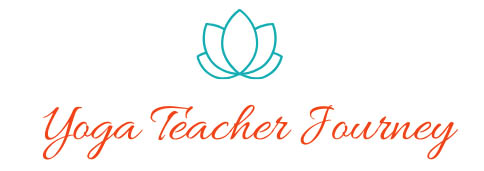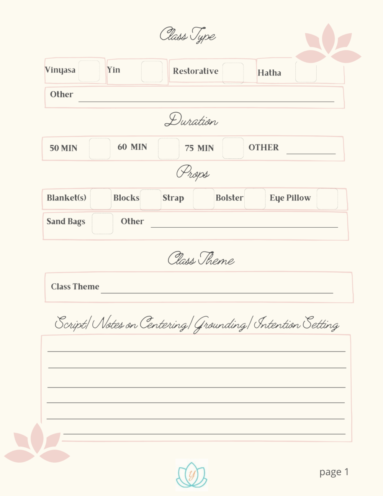Where do I even begin? So much has happened during the past several weeks, it truly is hard to find a starting point. I’ve wanted to write this post for a few days now, but just as difficult as finding a starting point has been trying to put all of it into words.
I recall the last Sunday morning I taught at the studio when COVID cases and “social distancing” language were first showing up in the United States. I was frightened. That was JUST TWO SUNDAYS AGO – I can hardly believe it! The weekend prior, when I taught an Essential Oils and Yoga Workshop, we may have had a few cases, but not in our local area. Even so, I used q-tips to touch student’s third-eye area when applying Frankincense, just as a precaution. For most of the workshop, I shook a few drops of the oil we were using into the student’s hand and allowed them to apply it themselves. Things had already begun to change.
Fast forward to today (2 weeks into this crisis). I’ve taught 8 classes virtually for the two studios I teach for (one currently uses Zoom; the other Facebook Live), and I’ve taught and posted several classes in my own Facebook private group for students to practice with me live, or access and practice as their schedule permits.
I had very little time to prepare, to learn new technology, and to shift mentally to this new normal. I was not alone! All of the yoga teaching community was scrambling to make decisions about what to do during this “stay at home,” “stop the spread,” “flatten the curve” movement. Once our state received the mandate to closed all non-essential businesses, including yoga studios, the survival instinct kicked in for many. Not just, how does my yoga studio survive financially – but also, how do we continue to provide yoga to our community at a time when it is needed the most? The answer, of course, was to teach online.
Once a studio decided they would move forward to provide classes online (some took longer than others to do this) the next question was: which platform do I use? Options such as Facebook Live, Zoom, and YouTube Live seemed to be the most popular options. Others were using Vimeo, and IGTV (Instagram), to name a few.
I had very little previous experience with any of these technologies. I had used Zoom for video conferencing and YouTube for videos placed into some courses I had designed at my former job. I had used Facebook mostly to promote my yoga business (Cher Yoga @cherbosseyoga), but not to the extent I’m using it now (more on social media later in this post).
The first online class I taught was a vinyasa through Facebook Live. I also happened to be the first teacher at that particular studio to deliver a class online. No pressure there. So, I got out my digital camera tripod and my husband jerry-rigged some wire to make an adapter for my iphone (I’ve since ordered an iPhone tripod mount from Amazon.com). We did a couple of trial runs just to make sure I was in the frame and people could see all of me as I moved. As it turned out for that first online class, everything was a mirror image, so all of my cues were backwards! Even the room I was in appeared backwards. I ended up Googling the issue and found a fix. This might have just been a thing for my phone (iPhone 11 Pro Max) since I didn’t hear of anyone else having this issue. It was an easy fix that I found on YouTube, just changing a setting to “horizontal flip” prior to starting the video each time. I did not have the same issue with Zoom.
The nice thing about Facebook Live is that immediately following the class, you have the option to share the video which posts it on the page. We used a private group page for this purpose. The recordings are a definite plus in my book, because (as I learned), you have the ability to watch and critique yourself afterwards. This may be a negative as well because… well, you have the ability to watch and critique yourself afterwards. I did a lot of that. Watching and critiquing. Sitting alone in a room teaching to my Smartphone was definitely stepping outside of my comfort zone. But it actually didn’t take long to begin to feel comfortable with teaching this way. In hindsight, after just two weeks of doing this I’ve learned a lot about what I do and say that I didn’t even realize I was doing. You also get a chance to see your own alignment – good and bad and work on that as well if needed. A learning experience for sure.
Students who joined the class live had the ability to type comments or send “likes” during the class. This felt more collaborative to me – more like our community coming together than did the Zoom technology I used next. After the class, students posted comments and thanked me, and some critiqued me too.
A negative to using Facebook is that you are not legally allowed to use licensed music while teaching. I had no idea this could be an issue, but apparently studios have music licenses so their teachers can share music in the classes. We learned the hard way after Facebook shut down a few videos. So the search was on for Royalty Free music which you ARE allowed to use. I did find some on Spotify which is what I ended up using and I learned there are other applications such as Soundstripe, Power Music and Epidemic Sound as well. Amazon Music may be an option as well.
The next class I taught using Zoom. This was an evening Restorative class. The plus side of this, was that prior to the class, I had the ability to chat with others attending and even see their faces if their video was on. Eventually, they were asked to mute their microphones and turn off their video. Teaching with Zoom went smoothly with no apparent issues. I did use my Royalty Free music but have since been told that it’s okay to use licensed music on Zoom. The studio has not recorded the videos to my knowledge but I understand there is an option to do this and send them to your students following the class. Zoom, at least the way we’re using it, has been more cumbersome than using FB Live. Prior to the class, I have to go into our registration portal, collect the email addresses of the students registered for the class and e-mail them the link. Not a big deal initially, but if students register late, it can be stressful to provide them the information they need, and set-up for your class in time.
For me, setting up for any of the online platforms takes some preparation. I only have one space in my home large enough to teach online which is my living room. Above my living room is a loft, a TV gathering room. So, if my hubby is home, he needs to go somewhere other than the loft for the duration of my class so as not to interrupt. Our two dogs can cause interruption too, so I need to find a space to keep them quiet during my class. My lab doesn’t bark unless there’s a real reason to, but my little rescue barks at squirrels, birds, people jogging a mile away – you name it. So yes, some preparation is involved in setting up in a timely manner.
With all of this said, it has been wonderful to have a way using these technologies to still meet the needs of yoga community during this unprecedented time of crisis in our nation. People need yoga more than ever right now, and I am proud to be a provider in this industry. Honestly, it has been a godsend for me too. I have completely immersed myself in yoga. I’ve found myself, reading and re-reading my yoga texts, watching other respected teacher’s videos (see my post on My Favorite Teachers), viewing the flurry of activity of yoga posts – and making my own posts on social media, teaching online for the studios, and teaching online to my friends and family. It’s all given me a sense of purpose during an extremely stressful and difficult time.
I wrote this post for social media a week or so ago on the emotions that have surfaced during this pandemic.

And then, recently added Inner Strength, Titiksha in Sanskrit, which means: the capacity for enduring difficulties, and the strength that comes from knowing you can endure (Yoga Mind, Suzan Colon). This is what I am working on, Titiksha. Finding a way to endure this crisis as are many yoga teachers. Who knew yoga would help me find this strength. Let’s do this together as a yoga community. Let’s find our inner strength, Titiksha, and know that WE ARE STRONG AND WE WILL ENDURE.
Stay well friends.





